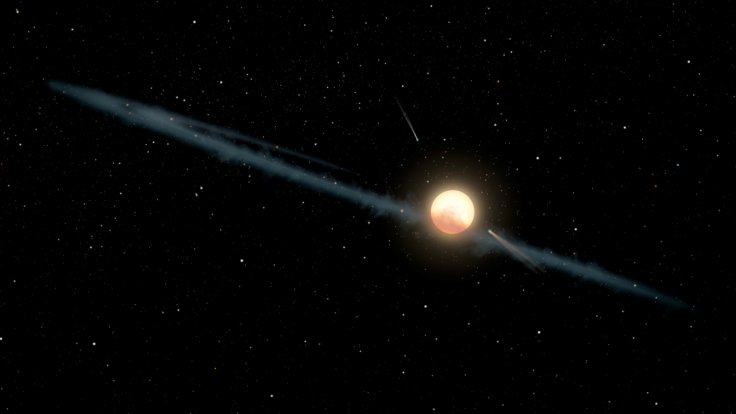
The 'most mysterious star in the galaxy' has finally given up its secret and it is quite different from what people have been imagining. The star called KIC 8462852, nicknamed Tabby's Star, has baffled scientists for a long time due to its periodic dimming and brightening activity. Now, the reason is clear and it is nothing but dust.
When the strange activity was discovered in 2010, astronomers came up with various possible explanations, including meteors, comets, rings around the star and even an 'alien megastructure'. Even NASA was unable to provide a satisfactory reason for the phenomena.
The mysterious star was observed from March to December 2017, after receiving crowdfunding for the project. Tabby's star, named after Tabetha Boyajian, an astronomer at Louisiana State University and one of the scientists in the study, showed a variety of wavelengths of light.
The data proved that the starlight is not blocked completely during the dimming period. Instead, much more red light passes through as compared to blue light. "Whatever is passing between us and the star is not opaque, as would be expected from a planet or alien megastructure," said Boyajian in a press release.
If any planet or alien body collides with Tabby's star to cause the dimming, it would lead to extreme temperature changes that would have been recorded by the telescopes. This led to the conclusion that dust is the most probable reason for the star's behavior. It is also possible that the star is not oblong-shaped after all.
Jason Wright, an astronomer at Penn State University and lead scientist of the "Where's the flux?" project to observe the star, is open to other possible explanations of this unique activity. He says that he would like it if the cause turns out to be a black hole surrounded by a bunch of dust. However, he realizes that it is a "dark horse idea" and cannot be pursued until they analyze the new data. So far, only 10 percent of the huge bulk of data has been comprehended.
"It's overwhelming. It sort of feels like a Christmas where everyone gets you books, and at the end of the day you have this enormous stack – but you have no idea where to start or how long it's going to take to get through it all," says Wright.
Although it is a Herculean task, scientists are hoping to find other such stars in the universe which show brightening and dimming effects like Tabby's star. And even though this time it is not because of planet collision or an alien structure, who knows what the future might hold?
Watch Tabetha Boyajian talking about 'the most mysterious star in the universe':









